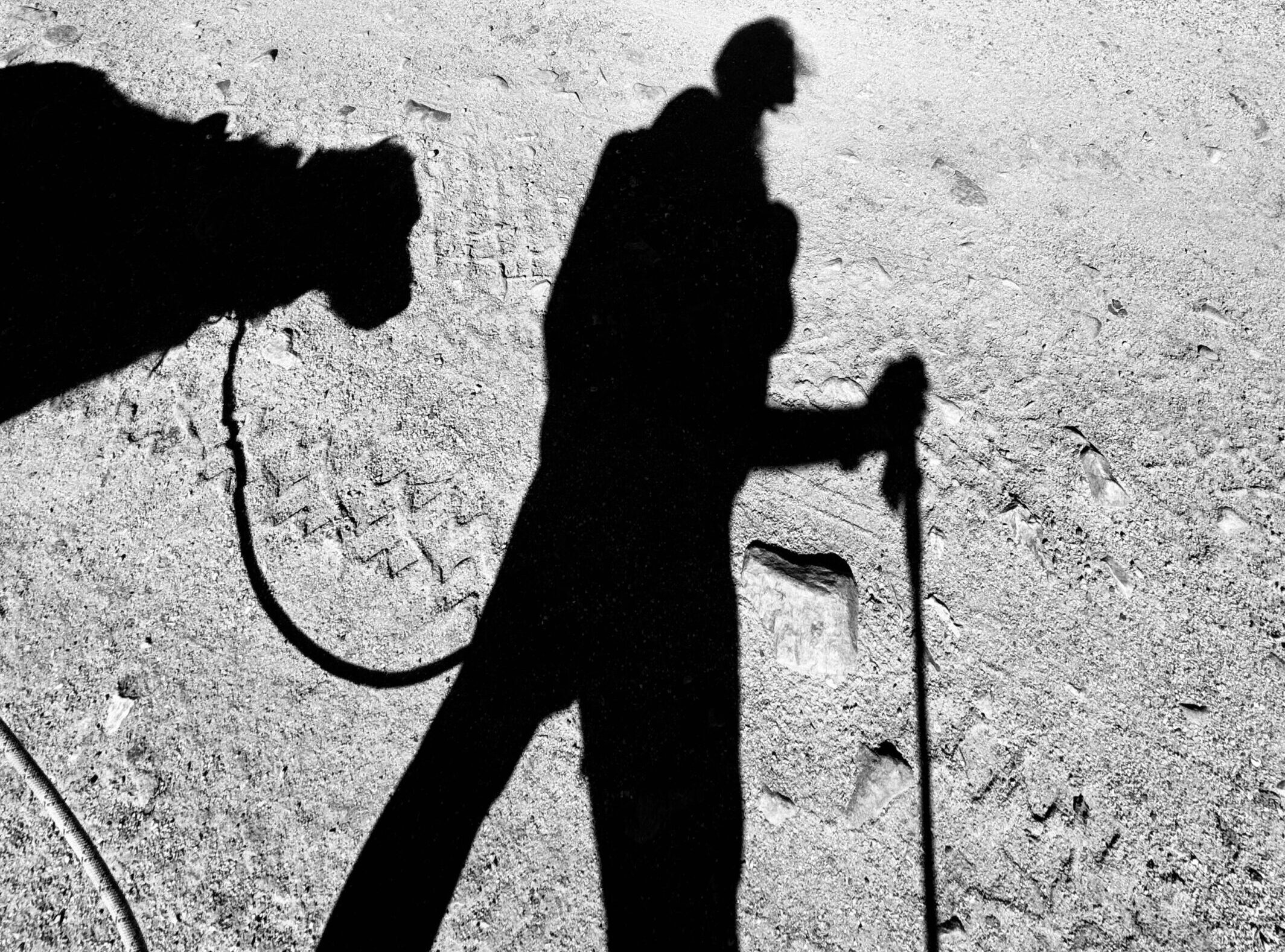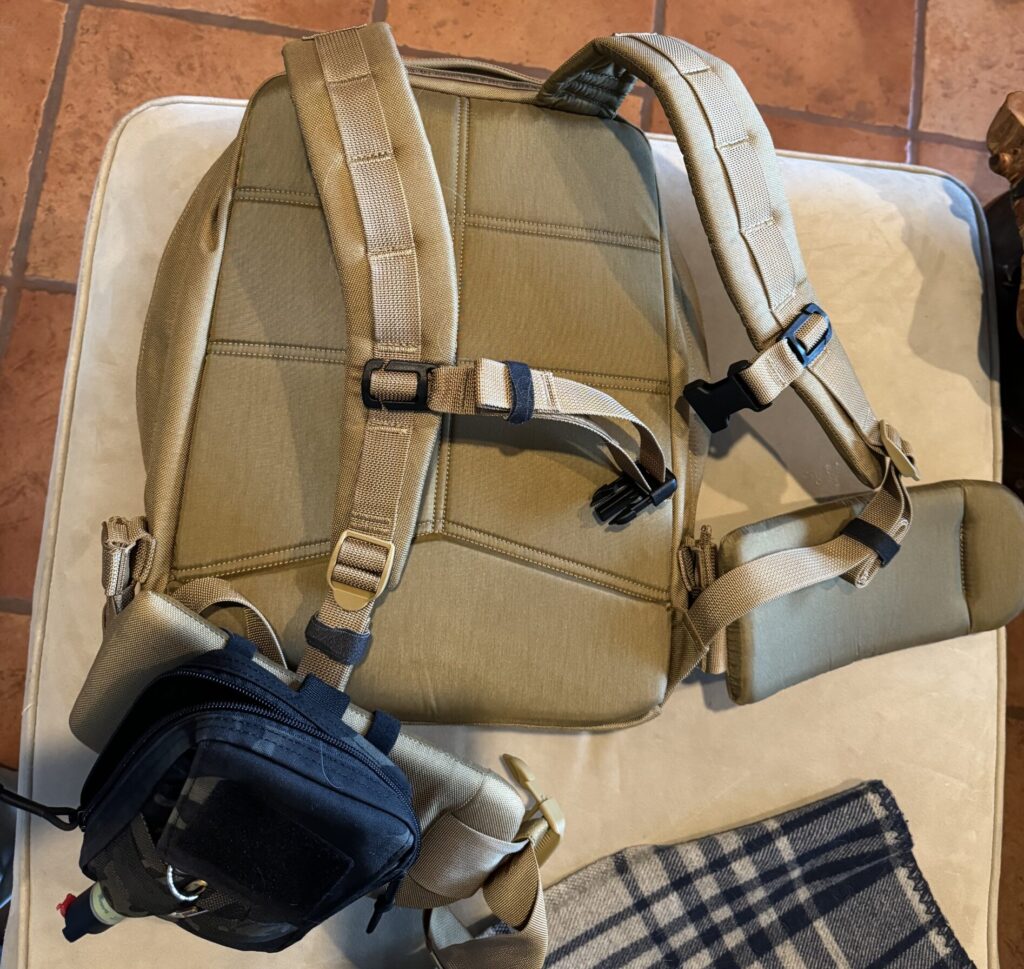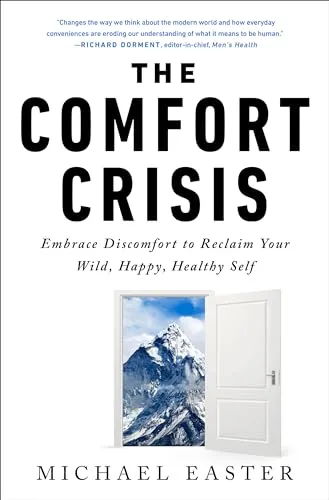Michael Easter wrote a book, The Comfort Crisis, encouraging people to get out of our all-too-comfy modern way of living, that is making humanity weak and sickly, and back to what humans have been capable of doing since the dawn of man. He introduces us to rucking – the simple, archaic and very uniquely human activity of walking while carrying things on our back.
Here’s my short take: Put some weight in a pack on your back and GO! Walk. Walk the dog. Walk the baby. Walk yourself. Take a friend.
Here’s my expanded short take: Put some weight in a backpack and go for a walk. It’s cardio without doing cardio. Strength training without going to the gym. Fat burning without getting on a treadmill. Core strengthening without doing crunches. There’s nothing to add to your daily to-do list. You’ll gain muscle, build bone, strengthen your core, and lose excess weight.
Yes. It’s that simple.
Rucking is strength and cardio in one,” McCarthy said. “It’s cardio for the person who hates running, and strength work for the person who hates lifting.”…..Rucking corrects for body type. Have too much fat or muscle? It’ll lean you out. Too skinny? You’ll get stronger and put on some muscle.
Easter, Michael. The Comfort Crisis: Embrace Discomfort To Reclaim Your Wild, Happy, Healthy Self (p. 238). Harmony/Rodale. Kindle Edition.
The putting on muscle part is important. A topic for another day, but I’ll say this:
YOU NEED MORE PROTEIN.
What is rucking?
Rucking is what soldiers are doing when you see them marching with 50lb ruck packs on their backs. It turns out, this is a great way to get people physically fit with low risk of injury. People also lose body fat, gain muscle and build bone. But what is most intriguing is that it is walking, strengthening and a cardio workout all at the same time. It burns 2-3x the calories of walking! Burn more by increasing speed, load or incline.
What could possibly be a more efficient general workout?
Although I knew about rucking in the military training sense, I learned about rucking, as an exercise for regular people, in the book. If you are fit and capable you can stop reading this post and go right to it, linked above.
NO!, You say????
Are you scared off by the mere mental image of a soldier carrying a 50lb ruck?
Are you thinking “No way. I could never do that”?:
Well, me neither !
So, imagine this instead: Grandma walking her dog with a brace on her leg, a walking stick, and a 1L water bottle in a day pack on her back. Much more achievable, isn’t it?
This was my initial foray into rucking.
The beauty of it is that whether you are out of shape or very fit, it works. It works whether you can carry 1.5 lbs or 50. A fit, healthy young man can go out for a walk with his grandmother. BOTH get themselves a good workout doing the same thing, at the same time, together, talking about life.
Scale this activity for what you CAN do. Start with going outside for a walk.
Can’t do even that? Start with an exercise in a chair program. Then, get up and walk around your house a few times. Make it into a habit and do it every day. Progress to walking outside around your dwelling. Then a quarter mile down your street. Then a half mile…
Once you’ve built the habit and strength and tolerance for a walk outside, add some weight. I filled a lightweight 700ml water bottle to start, 1.5 lbs. Carrying water is wise, and for desert dwellers, necessary. The advantage of water bottles is that it is easy to adjust as needed. Too much? Make a cactus happy, and dump some out. Ready to add more weight? Just. Add. Water.
It’s that simple. Start today.
Here’s my revelation: I’d stopped carrying a purse years ago for all the reasons. But, going for a walk in the desert any distance from home does require taking a water bottle. I had been carrying the bottle in a sling bag over my shoulder, like a purse. It felt like “work”. It was uncomfortable. I thought that was me being weak and fragile, and a sign that I was not ready for anything more. Some of the discomfort is due to the fact that it is an unevenly distributed and unstable load. It’s shifty. It flops unpredictably. And, whatever you do, don’t bend over to tie your shoe. If you’ve done this, you know what I mean.
And….here’s the kicker: Most people can carry a water bottle in a small sling bag without a problem. OK, sure, but staring me in the face, was the fact that I could not. I’ll leave out the stunning revelation that I’ve gone from able-bodied to dis-abled for another post. I’ll leave out realizing that to keep functioning, I’ll have to adjust every little mundane thing I do because of it.
One day I thought: Maybe it isn’t the weight. Probably, it isn’t the weight of a water bottle. It was the gear. The shifting load was juuuust enough to throw my pitiful self off balance.
So, I experimented. I moved that bottle into a backpack. And? It was like carrying nothing at all! This was a life-changing revelation. It seemed way “overkill” to throw on a backpack to hold a water bottle just to walk the dog a half a mile.
But, so what? All I needed was different equipment to accommodate my needs. So what if it is “overkill” just to walk the dog? Why did I let such an idea stop me from progressing? This was no different than needing a cane, or a wheelchair, or glasses!
Moral of the story: Get what you need, regardless of whatever “they” say.
Using water bottles or a water bladder, little by little, add weight and/or distance. As you add weight, you’ll get to a point that you’ll need to distribute the weight properly for success.
1L water weighs 2.2 lbs. 2L water weighs 4.4 lbs. 3L water weighs 6.6 lbs.
Try a good hydration pack with comfortable shoulder straps and a hip belt. I have tried a variety of them, and like the princess and the pea, most have not been “right” for me. So “not right” that for a long time, I thought I would “never” be able to tolerate using a day pack at all. Hence, the water bottle sling apparatus. We need not revisit how dysfunctional that was for me. I’ve progressed as a human, so let’s move on…
I settled on the Osprey Raven 14 https://www.osprey.com/catalogsearch/result/?q=raven right now, and it’s nearly perfect. This one comes in men’s, women’s, a smaller version, and, there’s an extended version for bigger bodies. Yes, it’s more than you need to walk the dog. (But, as we’ve learned that’s not the point, is it?) It is what I need for my circumstance, and for where I walk said dog. No, this is not a sponsored post.
Once you’ve maxxed out the weight and comfort limit of your chosen setup, you’ll need something better. For my unique situation, anything over 8 lbs requires different equipment. Your situation is for sure different than mine, so, you do you. Once I dialed in the right equipment, I progressed VERY quickly. And that confirmed it. It wasn’t the weight, it was the gear!
In a matter of weeks I progressed from carrying nothing at all to carrying 10lbs on my back while I walk the dog. A few weeks later, I was up to 15lbs. Use the right equipment for you. Not what other people use. Not what most people use. Not what the “experts” talking to the general public and not the individual standing in front of them say to use. Not what the limited education and experience of the store clerk say to use. “What gear?”, you ask?
That answer leads us to the section of this post meant for the general audience:
Over a certain distance or number of pounds, you’ll want padded shoulder straps and, you might even want a padded hip belt. What distance and how many pounds? That depends on your unique situation and fitness level and your goals. They say you don’t need anything special for lower weight loads. Never-mind them. I did me, as described above. You do you.
There are indestructible backpacks designed to hold steel plates up high and very close to your back. Like this one: https://www.goruck.com. It is a beast! But…I’ve found I can actually carry 15 lbs in this “overkill” pack. Warning: $$$. I used “free” money: Credit card points.
For this ruck pack, I have 2 words: GAME. CHANGER. (Like chopsticks helping this disabled goldfish swim.)


There are much cheaper ways to accomplish this by placing books or a sandbag into a backpack. Here’s a video made by a firefighter about making your own ruckpack.
Some people like weighted vests with weight both on the front and the back. I say “no thanks”. Do what works for you.
I don’t tolerate cardio workouts very well. Plus, I dislike them. This is not a good combination for getting them done. Running? Not for me.
The load out:
I find rucking ideal. A bit of strengthening, a bit of cardio, and a bit of walking all at once. Now, I am rehabbing myself in the most efficient way possible, and without adding one more thing to my schedule.
BUT DOC, WHAT ABOUT MY BACK PAIN?????
That is also a topic for another post, but here’s my teaser: DesertDoc has a twisted up spine. I’ve had back surgery – twice! Stay tuned…
Here’s an interesting interview with Stuart McGill, PhD, a spine biomechanics expert talking about rucking:

